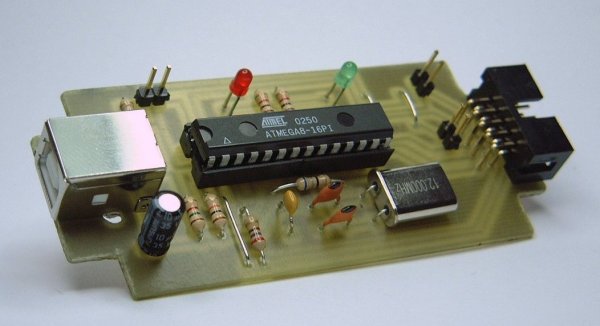Summary of Open Source USB AVR Programmer for Students and Hobbyists using Atmega8 microcontroller
This article describes a DIY USB programmer for AVR microcontrollers using an Atmega8 microcontroller and minimal external passive components. The Atmega8 firmware emulates the USB controller, eliminating the need for a separate USB controller chip. While an initial AVR programmer is needed to load this firmware onto the Atmega8, the programmer works across Windows, Mac OS X, and Linux with programming speeds up to 5KB/s. The firmware and computer drivers are freely available, making it a cost-effective solution for students and hobbyists.
Parts used in the USB AVR Programmer Project:
- Atmega8 microcontroller
- External passive components (resistors, capacitors)
If you cannot afford to buy a USB programmer for AVR, don’t worry, you can make one by yourself. This programmer uses a Atmega8 microcontroller with a few external passive components. The good thing is you don’t need any USB controller because it is implemented in the firmware inside Atmega8. Yes, you are right, you need an AVR programmer once to load the firmware inside Atmega8. You figure out how you gonna manage that.
This programmer has been tested under Windows, Mac OS X, and Linux and worked well. It can program a chip at speed up to 5Kbytes/sec. The firmware for Atmega8 and necessary drivers for host computer are available for free.
For more detail: Open Source USB AVR Programmer for Students and Hobbyists using Atmega8 microcontroller

